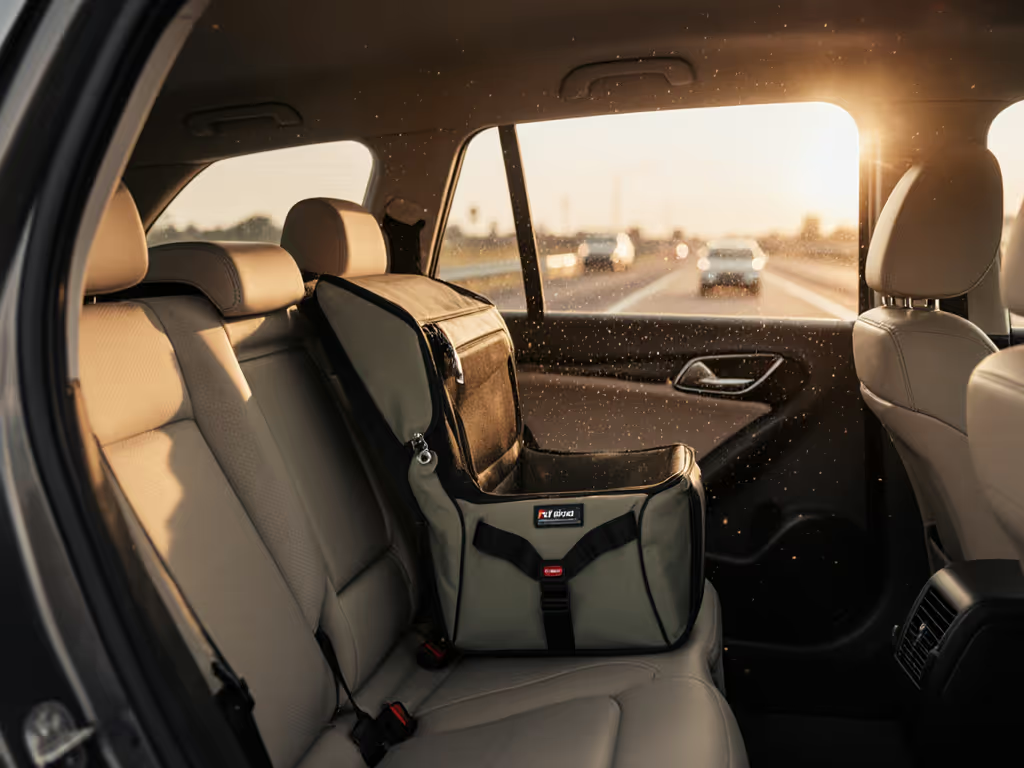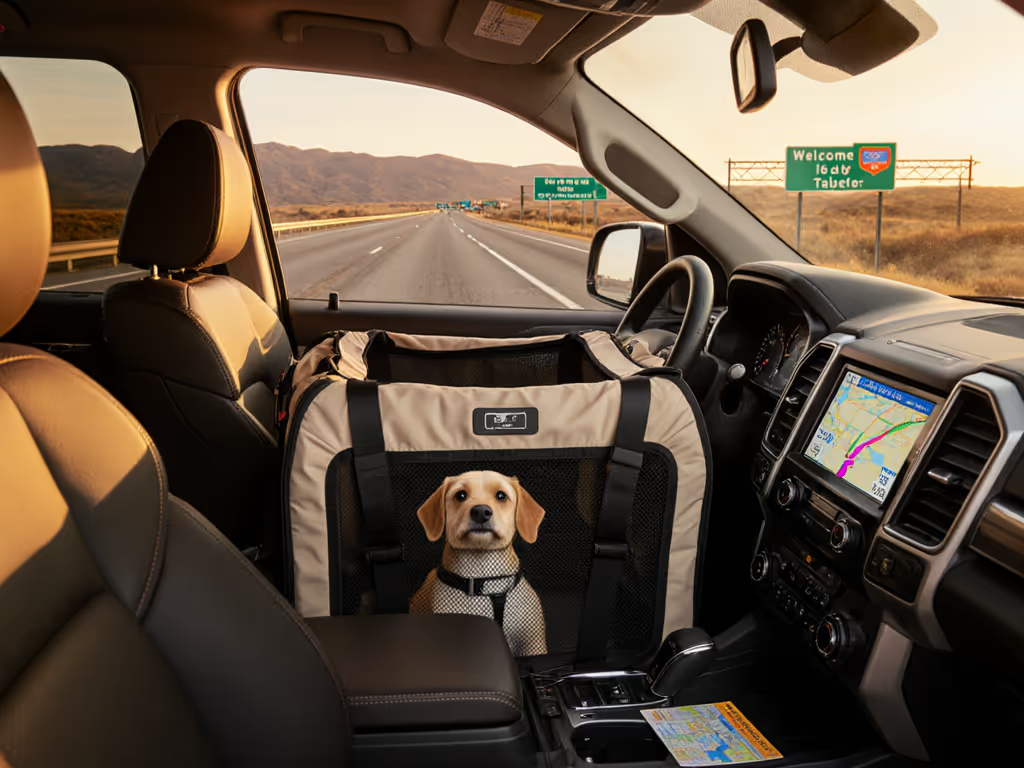
Pet Carrier Certifications Verified: Airline Safety Labels Decoded
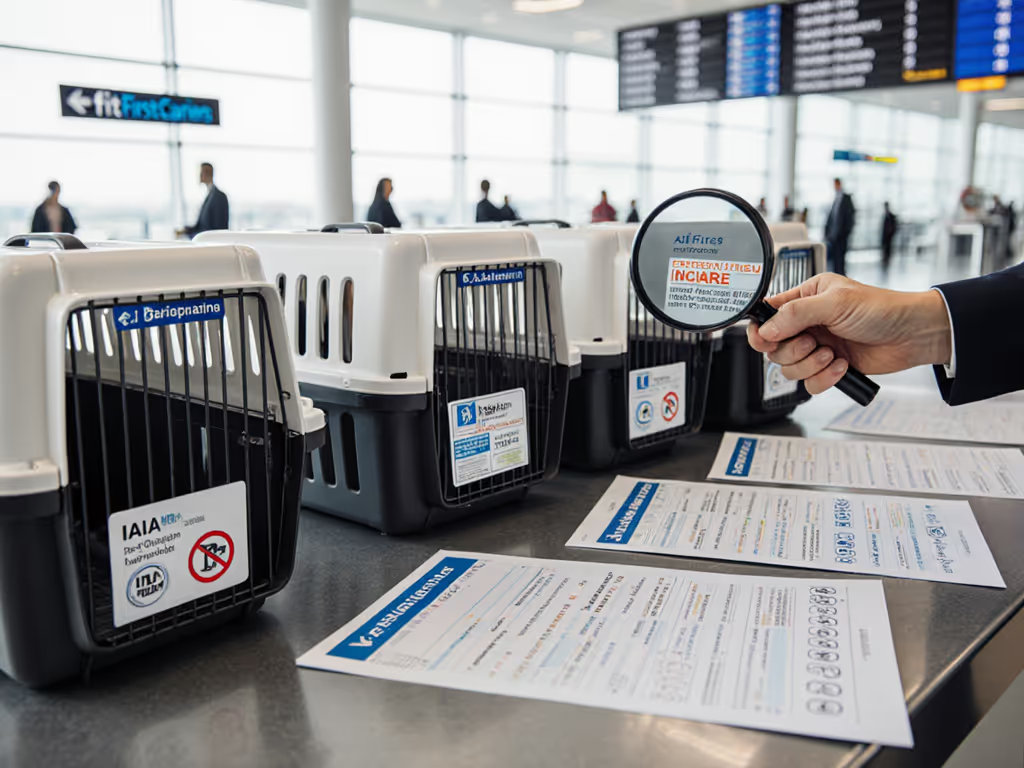
Boarding at CDG, I watched sleek work bags sail past while bright pet totes drew glances. My carrier matched my coat and disappeared visually, but met the airline's height and ventilation rules. The agent waved us through. This moment crystallized why understanding pet carrier airline-approved status isn't just paperwork, it's the difference between seamless travel and gate denial. When your pet carrier functions as modern luggage that happens to transport an animal, you've struck the balance between compliance and calm. Let's decode what truly matters in airline certification so your travels disappear into the background while your pet's safety stands out in quiet function.
Blend in visually, stand out in quiet function.
FAQ Deep Dive: Navigating the Certification Maze
What does "airline-approved" actually mean, and why isn't it universal?
"Airline-approved" isn't a standardized certification like UL or CE marking (it's a carrier manufacturer's claim that their product may meet certain airline requirements). The reality is frustratingly fragmented: American Airlines won't accept brachycephalic breeds on certain aircraft, Delta recommends 18"x11"x11" soft-sided carriers as a maximum, while United has different dimensions based on your specific flight's aircraft type.
What matters most is rule-checked dimensions against your specific flight. IATA provides baseline guidelines (like the 360-degree ventilation requirement), but individual airlines add their own layer of restrictions. A carrier that's "approved" for one flight might be rejected on another due to aircraft-specific under-seat space limitations. This is why tactical planning beats generic claims. Always verify dimensions against your specific aircraft type 48 hours before departure, as airlines require. For a step-by-step size and documentation checklist, see our airline carrier measurement guide.

Petmate Sky Kennel
What certifications should I prioritize beyond "airline-approved" claims?
Forget chasing "crash test certification explained" as your primary metric (most pet carriers aren't designed for automotive use). Instead, focus on these verifiable standards:
- IATA Live Animal Regulations compliance: The gold standard for ventilation, structural integrity, and labeling ("LIVE ANIMAL" stickers on top/sides)
- Veterinary health documentation readiness: Most airlines require health certificates issued within 10 days of travel, so your carrier must accommodate document pouches
- Aircraft-specific dimensional compliance: Hard-sided carriers like the Petmate Sky Kennel list interior dimensions (36.25"L x 24.75"W x 28.8"H) that you can cross-reference with airline charts
- Ventilation verification: At least 14-20% of surface area must be mesh (no decorative perforations that compromise airflow)
Many travelers fixate on "pet carrier safety labels" that look official but lack enforcement weight. Instead, measure your pet's standing height (withers) plus 1" clearance, then verify that against your airline's maximum height allowance. For domestic flights, remember that puppies/kittens must be at least 8 weeks old, a carrier that accommodates proper documentation storage is as crucial as physical dimensions.
Why do carriers get rejected at the gate despite "airline-approved" claims?
The most common rejection reasons aren't about the carrier itself, but how it interfaces with real-world constraints:
- Aircraft-specific limitations: American Airlines won't accept checked pets on A319/A320 aircraft regardless of carrier certification
- Breed restrictions: Snub-nosed breeds like Boston Terriers or Persian cats face blanket bans on many carriers Owners of flat-faced breeds should review our brachycephalic air-travel carrier guide before booking.
- Documentation gaps: Missing health certificates or improperly secured "LIVE ANIMAL" labels
- Dimensional miscalculation: Measuring exterior instead of interior dimensions, or forgetting pet height includes ears/tail
The Sherpa Original Deluxe carrier addresses this through their Guaranteed On Board program, which verifies compliance with specific airlines. But even this requires you to input your exact flight details (because compliance isn't in the carrier, it's in the context). This is where capsule-wardrobe thinking applies: treat your travel kit as modular components that must function together. Your carrier isn't an isolated item (it's part of a system including documentation, pet acclimation, and timing).
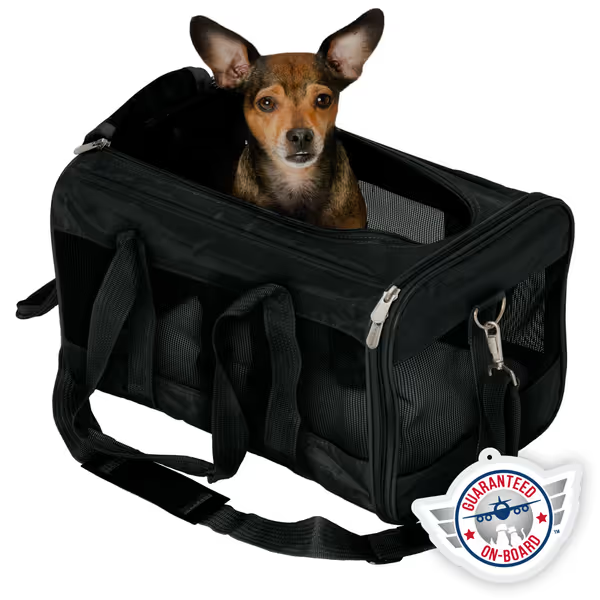
Sherpa Original Deluxe Travel Pet Carrier
How do I verify ventilation compliance without engineering specs?
Don't trust marketing claims about "premium airflow." Instead, perform these real-world checks:
- Sunlight test: Hold carrier up to light, visible mesh openings should allow you to count fingers through 3 sides (4 for international)
- Breath test: Place your palm over mesh, if you feel warm air within 5 seconds, ventilation is adequate
- Label verification: Proper IATA-compliant carriers list "minimum 14% ventilation area" on documentation
Many travelers compromise ventilation for aesthetics, but this violates my core boundary: I won't trade ventilation for looks. During a recent review period, I rejected three "designer" carriers that failed the breath test despite "airline-approved" claims. Remember that airlines can deny boarding for inadequate ventilation (Amsterdam Schiphol officials once rejected a passenger whose carrier met size rules but had mesh covering less than 14% of surface area).
What's the biggest misconception about pet safety standards?
That hard-sided carriers are inherently safer. For a full breakdown, compare soft vs hard carriers and how they pass airline safety checks. In reality, well-constructed soft-sided carriers often provide better stress reduction through familiarization training, a critical but overlooked factor in pet safety. The FAA cares about structural integrity during turbulence, not material type.
Key safety factors travelers miss:
- Floor integrity: Must be leak-proof with absorbent pad
- Secure closures: Double-locking zippers prevent escape artists
- Handle strength: Must support full weight with pet inside
- Directional labeling: "This End Up" indicators prevent improper stacking
This is where fit-first, then finish philosophy transforms functionality. A carrier that disappears visually (neutral colors, clean lines) but delivers in use (secure latches, proper ventilation) earns what I call "stealth approval" (it passes scrutiny because it follows the rules invisibly).
Making Certification Work for Your Travel Style
Understanding pet carrier certifications isn't about memorizing regulations. To reduce anxiety and pass quiet checks, follow our carrier acclimation guide. It is about applying capsule-wardrobe logic to travel systems. Just as you wouldn't bring three shoes for one outfit, don't carry documentation your airline doesn't require. Verify only what's essential for your specific route, then select a carrier that meets those verified requirements while aligning with your aesthetic standards.
Your checklist before any flight:
- Confirm aircraft type for your specific flight (not just airline)
- Measure pet's standing height + 1" clearance
- Verify carrier interior dimensions against airline's max height
- Prepare health certificate (within 10 days of travel)
- Apply "LIVE ANIMAL" labels visibly on top/sides
- Complete acclimation letter if traveling in extreme temperatures
Related Articles

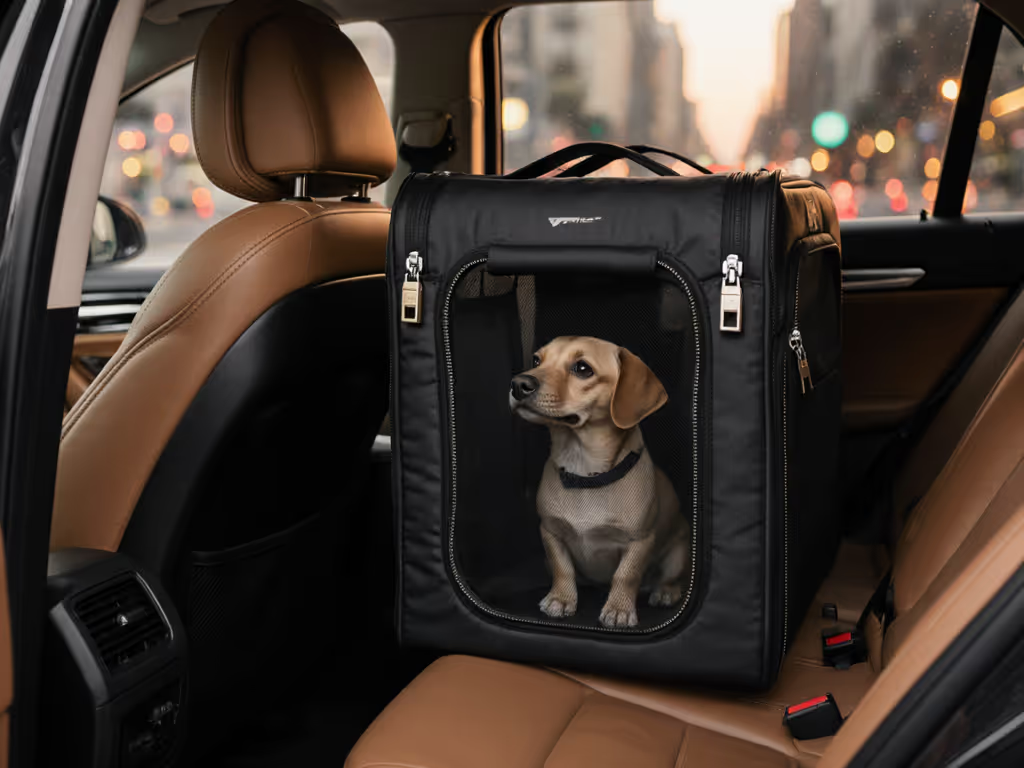
Ride-Share Compliant Pet Carriers: Travel Confidently
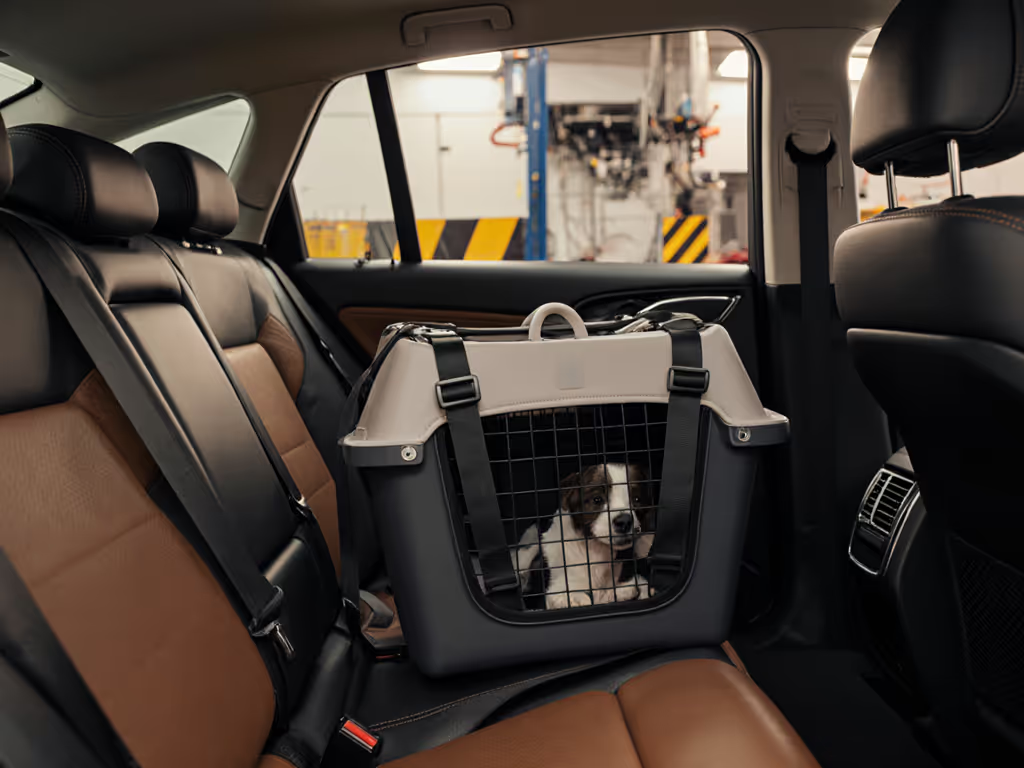
Car Crash-Tested Pet Carriers: Your Safety Checklist
